Q
What is the Perodua Axia Size? How Big Is It?
The Perodua Axia is one of the most popular entry-level city cars in Malaysia. Its body dimensions are 3,760 mm in length, 1,665 mm in width, and 1,505 mm in height, with a wheelbase of 2,525 mm. It belongs to the compact hatchback category, making it suitable for city driving and narrow roads. The Axia's size design strikes a balance between flexibility and interior space. Despite its small body, through an optimized layout, it offers sufficient headroom and legroom, making it especially suitable for small families or daily commuting. Additionally, the Axia has a ground clearance of 150 mm, which can handle common road conditions in Malaysia, such as uneven surfaces or slight bumps. As an economy car, the Axia performs excellently in terms of fuel efficiency, making it a great choice for consumers on a tight budget. For potential buyers who want to know more about the Axia, they can also refer to its different model versions, such as the Standard, SE, and AV. These versions vary in configuration and features but maintain the same body dimensions and practicality. Overall, the Perodua Axia has become a highly favored option in the Malaysian market thanks to its reasonable size, economy, and reliability.
Special Disclaimer: This content is published by users and does not represent the views or position of PCauto.
Related Q&A
Q
What Segment is Perodua Axia?
The Perodua Axia belongs to the A-Segment vehicles in the Malaysian market, which is the most entry-level microcar category. It mainly targets consumers with limited budgets who prioritize fuel economy. Its body size is compact (about 3,640mm in total length and a wheelbase of 2,450mm). It is equipped with a 1.0L three-cylinder engine and paired with a D-CVT gearbox, highlighting the flexibility for urban commuting and the advantage of low cost. The official fuel consumption data shows that it can travel about 22 kilometers per liter of gasoline, meeting the needs of Malaysian consumers for economical and practical small cars.
In terms of extended knowledge, Malaysia's automobile classification standards usually refer to the European system. Besides the Axia, A-Segment models also include the Proton Saga and other vehicles. These cars are characterized by their affordable prices (the starting price of the Axia is around RM22,000 to RM49,000) and are suitable for narrow road environments. However, their safety configurations have been significantly improved in recent years. For example, all models of the 2023 new Axia come standard with ABS + EBD and dual airbags, and the top - end version is even equipped with the ASA 3.0 advanced safety assistance system, indicating that entry - level car models are gradually upgrading their technological equipment. Consumers can choose different configuration versions according to their budgets. At the same time, it is recommended to test - drive and compare the Proton Iriz in the same class or second - hand B - Segment models before purchasing a car to comprehensively evaluate the balance between space and functionality.
Q
What is the Reslae Value of Perodua Axia?
As one of the best-selling entry-level models in Malaysia, the Perodua Axia shows relatively stable resale value in the used car market. This is mainly due to advantages such as the high vehicle ownership of the brand, low maintenance costs, and good fuel economy. Depending on factors like vehicle age, mileage, vehicle condition, and configuration, Axias that are one to three years old usually retain 60% to 75% of their original price, while those that are five years old are around 40% to 50%. The specific price also needs to refer to market supply and demand and maintenance records. In addition, the durability of the Axia and its extensive service network also support its resale value.
For consumers considering buying a used Axia, it is recommended to give priority to models with complete original factory maintenance records to ensure the vehicle condition. At the same time, pay attention to the configuration differences of minor facelifts in different years. For example, models after 2022 have upgraded safety features, and such updates may have a positive impact on the resale price. In the Malaysian used car market, economical small cars like the Axia usually have a fast turnover rate and are a practical choice for car buyers with limited budgets.
Q
How Many CC is Perodua Axia?
The Perodua Axia is one of the most popular entry - level compact cars in Malaysia. The engine displacement varies across different versions. Currently, the latest model of the Axia is equipped with a 1.0 - liter three - cylinder naturally aspirated engine, with a specific displacement of 998cc. This is a common engine configuration for compact economy cars. This engine emphasizes fuel efficiency and is highly suitable for city commuting and daily use.
For Malaysian consumers, the low displacement of the Axia not only means lower fuel consumption and road tax but also meets the domestic demand for economical and practical vehicles. It's worth noting that engine displacement (CC) doesn't directly determine a vehicle's power performance. Other factors such as horsepower, torque, and gearbox tuning also need to be comprehensively considered. Although the Axia has a relatively small displacement, its lightweight body design and optimized transmission system ensure sufficient power for daily driving.
Moreover, the Malaysian market is quite sensitive to the displacement of compact cars. Therefore, engines around 1.0 liters are very common locally. They can balance performance and cost and are also suitable for the local road conditions and fuel price environment.
Q
What is the Engine in Perodua Axia?
The Perodua Axia is a highly popular economy car in the Malaysian market. It is equipped with a 1.0-liter three-cylinder naturally aspirated engine, model number 1KR-DE. This engine was jointly developed by Perodua and Toyota of Japan. It adopts the double overhead camshaft (DOHC) and variable valve timing (VVT-i) technologies. The maximum power is 67 horsepower and the maximum torque is 91 Nm. It is paired with a 4-speed automatic transmission or a 5-speed manual transmission. The overall performance is smooth and it boasts excellent fuel economy, making it very suitable for urban commuting.
The design of this engine focuses on low fuel consumption and low emissions, meeting the environmental protection requirements of the Malaysian market. At the same time, it also reduces the daily usage cost for car owners. For readers who want to learn more about automotive knowledge, although three-cylinder engines may be slightly inferior to four-cylinder engines in terms of smoothness, their lightweight and high - efficiency features make them very popular in small - displacement models. The addition of VVT - i technology further optimizes power output and fuel efficiency, which are common technological trends in modern small - displacement engines.
Q
What is the Gearbox Type of Perodua Axia?
The transmission types of the Perodua Axia include manual transmission (MT) and continuously variable transmission (CVT). The 2023 Perodua Axia E 1.0 MT is equipped with an MT transmission, offering more direct gear - shifting control for drivers who prefer the manual handling feel and bringing a more engaging driving experience. On the other hand, models like the 2023 Perodua Axia 1.0 G, 1.0 X, 1.0 SE, and 1.0 AV are equipped with a CVT transmission. Its smooth gear changes can provide a more comfortable driving and riding experience and help improve fuel economy under specific operating conditions. The diverse transmission configurations fully meet the personalized needs of different consumers.
Q
What is the PCD Size of Perodua Axia?
The PCD (Pitch Circle Diameter) of the Perodua Axia is 100mm, which means its wheel hub bolt holes are distributed on a circle with a diameter of 100mm. Usually, it is fixed with 4 bolts. This specification is quite common among small cars in the Malaysian market. For example, models like the Proton Saga also use the same PCD size. Understanding the PCD size is very important for car owners when replacing wheels or upgrading tires. You must ensure that the PCD of the new wheels is the same as that of the original vehicle; otherwise, it may lead to installation mismatches or potential safety hazards when driving.
In addition to PCD, when replacing wheels, you also need to pay attention to the center bore diameter (CB) and the offset value (ET). These parameters together determine whether the wheels are suitable for the vehicle. If you plan to modify the wheels of your Axia, it is recommended to choose certified products and consult professional technicians to ensure compatibility and safety. At the same time, after modification, you also need to comply with the regulations of the Malaysian JPJ to avoid affecting the vehicle's annual inspection or insurance rights.
Q
Does Perodua Axia Have Apple Carplay?
Currently, the Perodua Axia doesn't come standard with Apple CarPlay. As one of the most popular entry - level models in the Malaysian market, the Axia focuses more on practicality and economy. Its infotainment system mainly offers basic functions such as Bluetooth connection, USB playback, and radio. If users want Apple CarPlay, they can consider installing a compatible central control system through third - party modification shops. However, it should be noted that this may affect the original factory warranty.
Apple CarPlay is an intelligent connectivity technology that projects the iPhone interface onto the in - car system, enabling convenient operations for functions like navigation, music, and calls. In recent years, many new cars have made it a standard feature. For example, the Proton Saga in the same class provides this function in some high - end versions. Nevertheless, the Axia remains a popular choice for city commuting thanks to its excellent fuel economy and low maintenance costs. It is recommended to weigh the priorities between technological features and practicality based on your own needs before buying a car.
Q
What is the Tyre Brand of Perodua Axia?
As one of the most popular entry - level models in the Malaysian market, the original - equipped tire brands of the Perodua Axia vary according to different years and vehicle versions. The common configurations include tires from the Silverstone brand, widely used in the local market. For example, there are cost - effective and durable tires like the Silverstone Kruizer NS800 or Synergy M5. These tires are specifically designed for the Southeast Asian climate, emphasizing wet - grip and wear resistance.
Some high - end versions may also use entry - level products from other international brands such as Bridgestone or Goodyear to enhance comfort and noise reduction. The tire specifications are usually 165/55 R14 or 165/60 R14, which meet the energy - saving requirements for urban commuting.
It is recommended that car owners regularly check the tire pressure and tread depth. In Malaysia's rainy climate, it's crucial to ensure the tires have good drainage performance. If replacement is needed, you can refer to the original factory specifications or consult a certified repair center. When upgrading, you can also consider energy - saving tires from brands like Michelin or Continental to further reduce fuel consumption. However, be aware that the handling characteristics of different brands of tires may affect your driving experience.
Q
Is Perodua Axia a Good Car? Learn the Pros and Cons Here
As one of the best-selling entry-level models in Malaysia, the Perodua Axia is indeed an economical small car suitable for urban commuting. Its advantage lies in excellent fuel economy. Official data shows that the 1.0L engine paired with a D-CVT transmission can achieve a range of over 18 kilometers per liter, making it very suitable for young families on a budget or first-time car buyers. Meanwhile, its compact body makes it easy to navigate through crowded city areas. The standard dual airbags, ABS, and ISOFIX child seat anchors also meet basic safety requirements. Low maintenance costs and an ample supply of parts are also its notable advantages.
Of course, this car also has some limitations. For example, the engine noise is quite obvious when driving at high speeds, the rear space is a bit cramped for adults, and the entry-level E model is not equipped with an ESC stability control system. If you often drive long distances, you may need to consider a higher - specification version.
It's worth noting that the Axia received a three - star rating from ASEAN NCAP in 2023. It's recommended to test - drive and compare with its counterparts like the Proton Saga or Bezza according to your actual needs before buying a car. At the same time, you can pay attention to the promotional offers regularly launched on the Perodua official website, such as free maintenance packages or low - interest loans. These can further enhance the cost - effectiveness of car ownership.
Q
What is the Width of Perodua Axia?
The width of the Perodua Axia varies depending on the model and generation. For the 2018 - 2019 models, such as the Standard E, Standard G, SE, and Advance, the width is 1,620 millimeters, while the 2019 Axia Style 1.0 AT has a width of 1,625 millimeters. In the 2023 models, the Axia E 1.0 MT has a width of 1,620 millimeters, and the Axia 1.0 G, 1.0 X, 1.0 SE, and 1.0 AV reach a width of 1,665 millimeters. The body width is an important parameter that directly affects the vehicle's handling, its ability to pass through narrow spaces, and the interior space of the passenger compartment and luggage compartment.
Latest Q&A
Q
How big is Myvi fuel tank?
As one of the most popular national cars in Malaysia, the fuel tank capacity of the Perodua Myvi varies according to different generations and versions. The standard fuel tank capacity of the current third - generation Myvi (from 2017 to present) is 36 liters. It features a lightweight resin fuel tank design, which balances the fuel storage needs and the vehicle's body weight.
The fuel tank size of this B - segment model matches the fuel economy of its 1.3L/1.5L engines. It can provide a cruising range of approximately 450 - 550 kilometers under combined driving conditions, making it suitable for urban commuting and short - distance trips. It's worth noting that the actual available fuel tank capacity might be slightly less than the nominal value. This is because about 5% of the tank space is reserved for fuel expansion as a safety measure.
For owners planning long - distance drives, it is recommended to use the fuel efficiency display function on the Myvi's dashboard to monitor fuel consumption in real - time. Also, it's advisable to develop the habit of refueling when the fuel gauge shows that there is about 1/4 of the fuel left. This can prevent the fuel pump from overheating and also help deal with the situation where gas stations are far apart in some remote areas of Malaysia.
Some comparable models in the same segment, like the Proton Iriz, have a 40 - liter fuel tank. However, the actual cruising range needs to be considered in combination with the engine efficiency. Thanks to Perodua's mature powertrain tuning, the Myvi always maintains a competitive edge in terms of fuel economy.
Q
Does Myvi use CVT?
Yes, the Perodua Myvi does use CVT (Continuously Variable Transmission) technology in some models, especially the newer ones. For instance, the third-generation Myvi, launched in 2017, and its subsequent versions are equipped with D-CVT (Dual Mode Continuously Variable Transmission) to offer a smoother driving experience and better fuel efficiency. CVT technology optimizes engine performance through continuously variable gear ratios. Compared with traditional automatic transmissions, it can adapt to driving conditions more flexibly, thereby enhancing overall driving comfort. However, earlier Myvi models may have used a traditional 4-speed automatic transmission. So, whether a specific model is equipped with a CVT needs to be confirmed based on the model year and configuration. For Malaysian consumers, the advantages of CVT lie in its smoothness and fuel - saving performance during city driving, which is very suitable for the common local traffic conditions. But if you're looking for more direct power feedback, some drivers may prefer the manual transmission version. If you're considering buying a Myvi, it's recommended to check the official specifications or consult a dealer to confirm the transmission type. You can also take a test drive to see if the actual performance of the CVT meets your driving preferences.
Q
What kind of gearbox is Myvi?
The Myvi is equipped with a Dual Mode CVT (D-CVT) transmission, which is a dual-mode continuously variable transmission. Compared with traditional CVT transmissions, it has an additional gear for high-speed driving, which helps the vehicle achieve better fuel efficiency.
In daily driving, this transmission drives the vehicle in CVT mode. Thanks to the operation of the steel belt, the vehicle moves smoothly and linearly, enhancing comfort. What makes the D-CVT special is that it automatically switches to the gear mode when driving at high speeds. Different from CVT transmissions of other brands, when driving at high speeds, the engine speed of vehicles with ordinary CVT transmissions will increase, the engine noise will get louder, and the fuel consumption will rise. Moreover, the power will decline after exceeding the maximum horsepower speed. However, after the gear of the D-CVT engages, the engine speed decreases, allowing the engine to maintain a reasonable speed and providing the vehicle with continuous and abundant power.
Q
Are Myvi and vios the same engine?
Some models of the Myvi and the Vios use the same engine. Daihatsu and Perodua have a joint - venture engine production plant in Negeri Sembilan, Malaysia, which provides power for multiple models including the Vios. Some models of the Vios and the Myvi are equipped with the 1.5L Dual VVT - i engine. This engine features high efficiency, reliability, and economy. Although its power is not extremely strong (the official 0 - 100km/h acceleration time of the Myvi 1.5 is 10.2 seconds), its low fuel consumption and durability are well - loved by consumers. However, these two cars have different positioning and market targets. Even if they share the engine platform, there are differences in vehicle tuning, configuration, and the overall driving experience.
Q
How many cylinders are in the MYVI?
As one of the most popular national cars in Malaysia, the engine configurations of the Perodua Myvi vary according to different years and versions. Currently, the mainstream models are equipped with two types of Dual VVT - i four - cylinder naturally aspirated engines, namely the 1.3L (1NR - VE) and 1.5L (2NR - VE). Therefore, all Myvi models feature a four - cylinder design. This four - cylinder layout ensures smooth power delivery while taking fuel economy into account, making it highly suitable for the urban road conditions in Malaysia.
It's worth mentioning that four - cylinder engines, due to their simple structure and low maintenance costs, are widely used in B - segment models in the local market. For example, the Proton Saga and Honda City also adopt a similar layout. The 1.5L version of the Myvi can output 102 horsepower and 136 Nm of torque. Coupled with its lightweight body design, it can offer a well - balanced performance whether driving on the congested streets of Kuala Lumpur or cruising on the highway.
For readers who want to learn about engine technology, they can note that the Dual VVT - i system used in the Myvi can intelligently adjust the valve timing. This technology shared by Toyota helps to improve fuel efficiency by about 15%. That's why the Myvi has remained one of the most fuel - efficient cars in Malaysia for years.
View MoreRelated News

Perodua Axia Hits 790,000 Sales: What Makes It So Popular?
AshleyAug 12, 2025
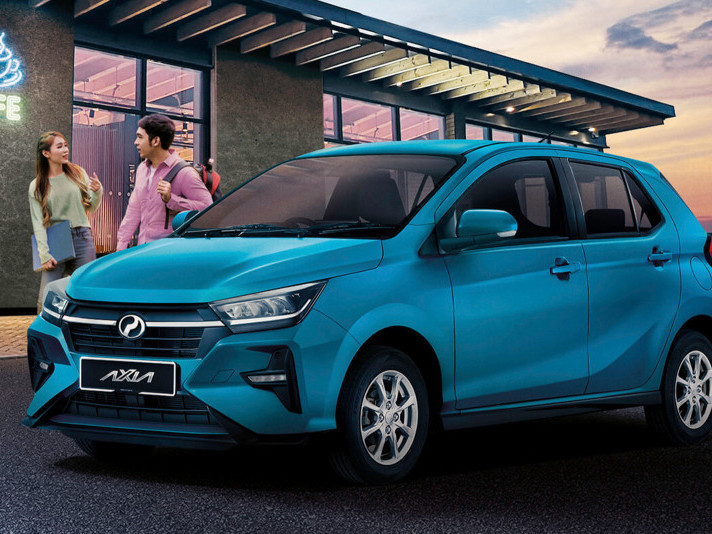
How Much is the Perodua Axia and How to Get the Best Price for Your Desired Model
WilliamMar 25, 2025
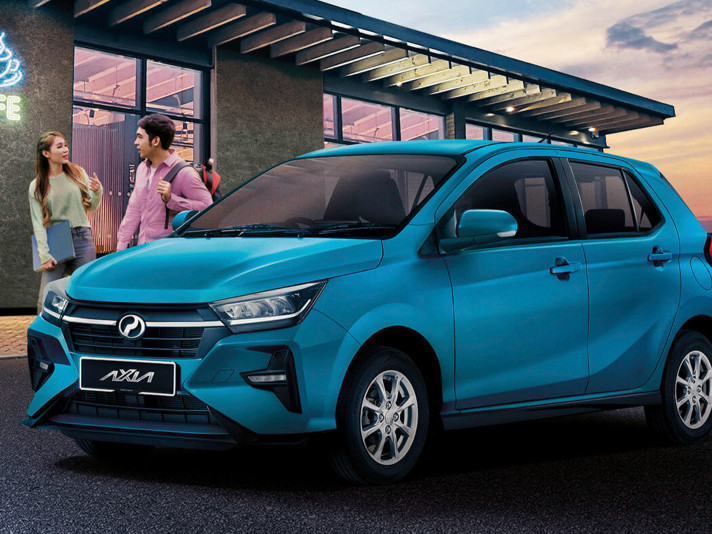
Perodua Axia’s Monthly Payments and Loan Calculation in Malaysia
WilliamMar 21, 2025
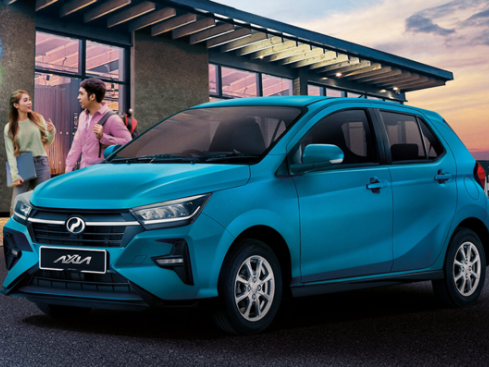
The 2023 Perodua Axia is priced from RM 22,000, with the 1.0 E MT offering the highest cost-performance ratio?
LienJun 11, 2024
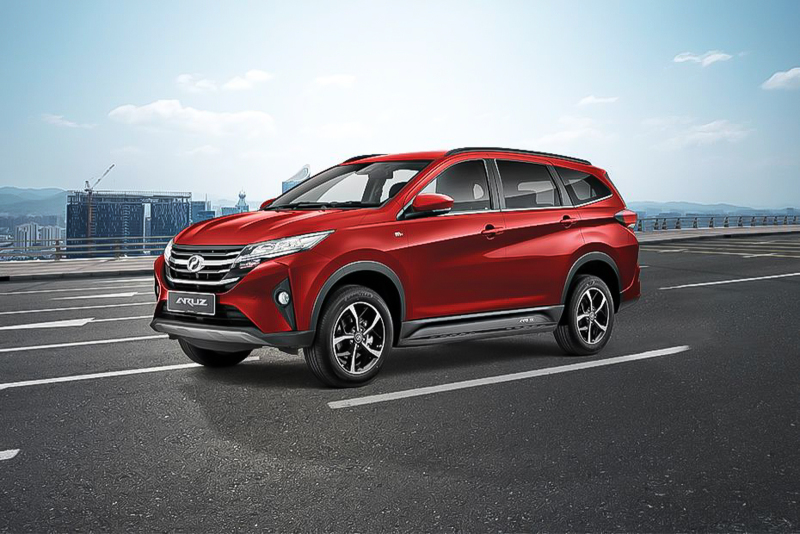
Perodua Aruz Review: A Practical and Safe SUV That Won’t Break the Bank
JamesJul 25, 2025
View More





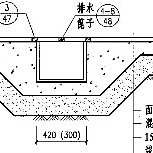




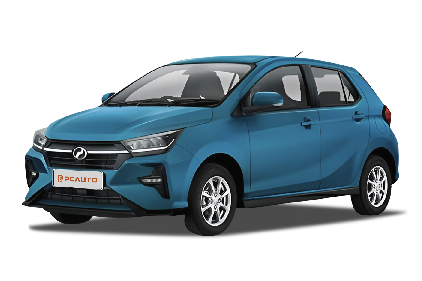





Pros
Cons